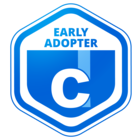We are in the implementation phase of our relationship with Docebo and I am struggling to determine the best structure needed to accomplish our long term goals. We plan to use the platform for everything from onboarding, compliance training, management training, general training, business line specific training (think sales, account management, accounting, ect) and eventually client/prospect learning. Some of the training will be required, some self-enrolled.
Does anyone have pointers on setting up Branches and Groups? Maybe something you learned after the fact and wish you would have done differently.
Thank you,










